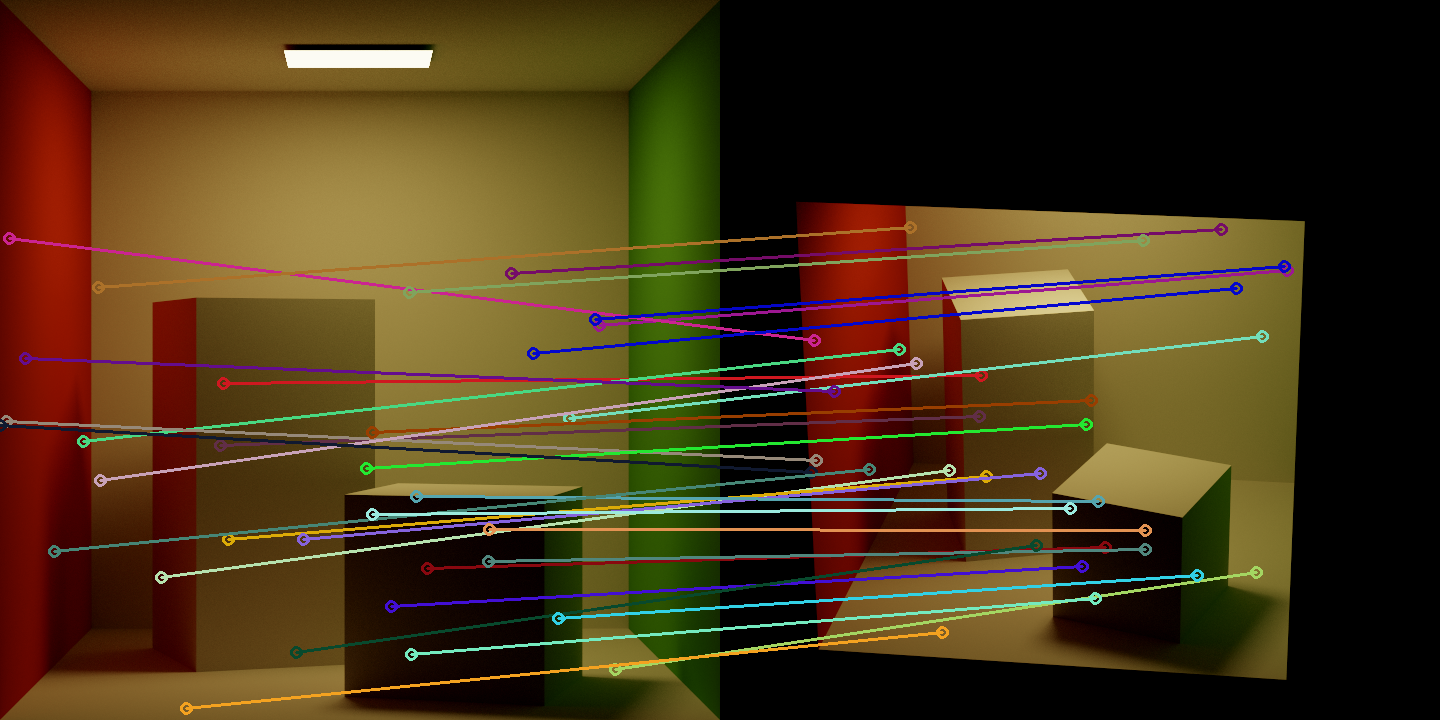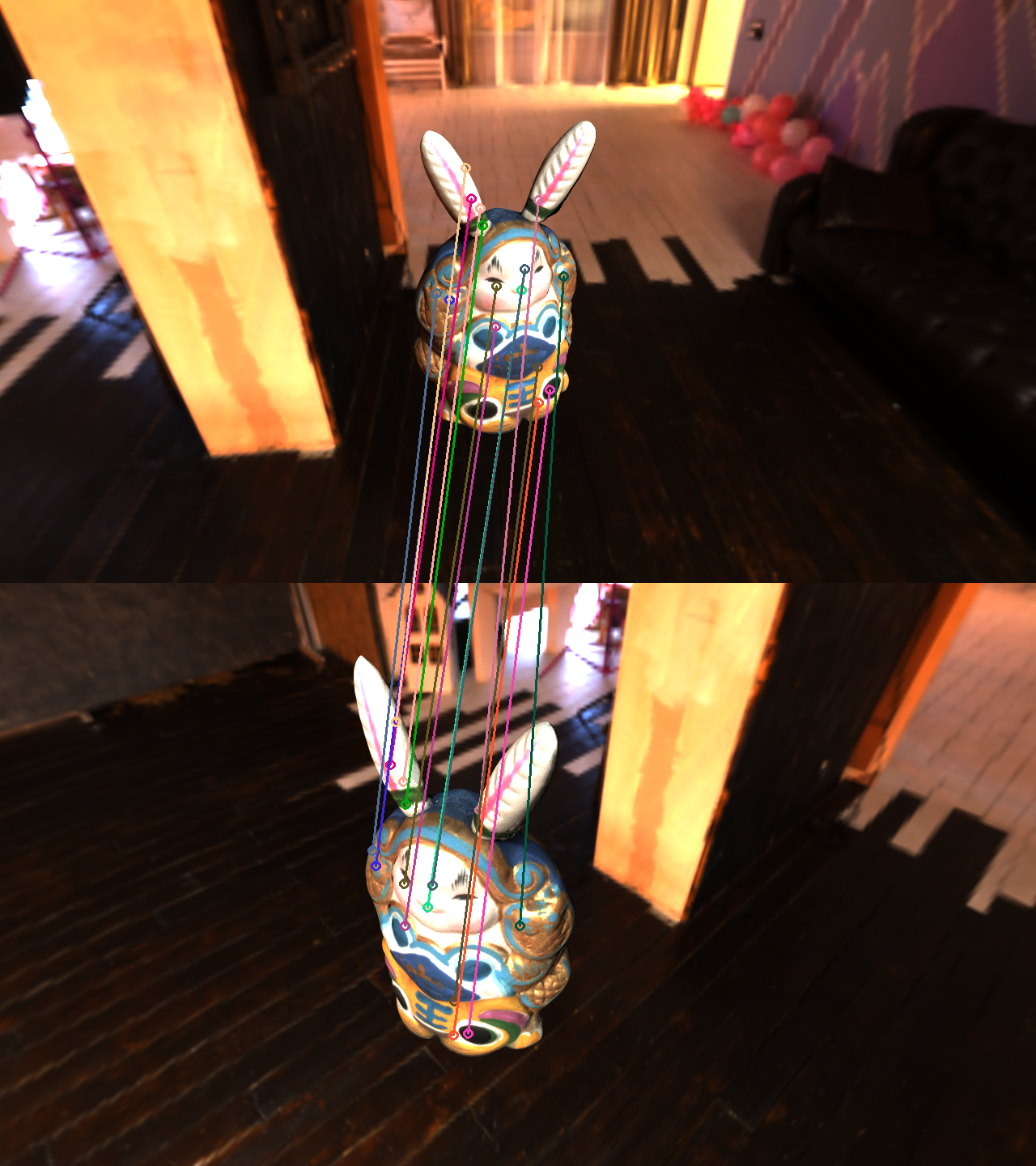Given a scene composed of mesh instances and a pair of reference view and source view, this project generates pixelwise correspondence between these views.
This project is based on Asuna, commit id b80e9e3f86ab9f27babe394955becba77c84868b.
Scene description file is quite similar with Asuna, except that some parts (e.g. material, textures, lights) are ignored when loading and parsing json. The most important change is that now you need to specify pair (reference view and source view) in the scene description file, like this:
"shots": [
view0, view1, view2
], "pairs": [
{"ref": 0, "src": 1},
{"ref": 0, "src": 2}
]The output of this project is a "flow" image of high dynamic range (.exr) of which R channel stores X offset, G channel stores Y offset and B channel stores visibility. Assume that "flow" image is denoted by I, pixel in reference view is Pr and its corresponding pixel in source view is Ps, we have:
I(Pr).b == 0: Pr is invisible in source viewI(Pr).b == 1: Pr is visible in source view- Ps.x = Pr.x + I(Pr).r
- Ps.y = Pr.y + I(Pr).g
Example visualization program is under demo folder.
- Add camera from OpenCV intrinsic parameter
- Shot from extrinsic parameter (unverified)

